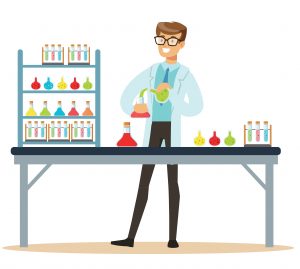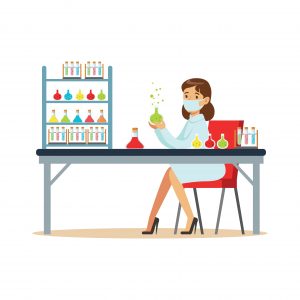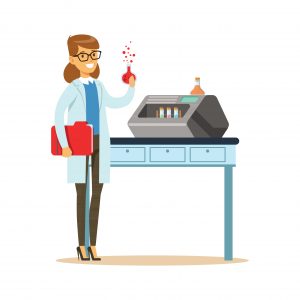
A heartfelt laugh helps us to learn and remember things – that’s scientifically proven! Thus, I recently started our new series on lab fails. We’ve all been there and we’ve all done that – life in general but especially as a lab beginner is tough. Luckily, failure and – even better and probably way more amusing – studying other people’s misfortunes is a precious educational tool. Thus, I’ve asked around for the funniest and most eye-rolling failures that happened to my colleagues in the lab. Now read, laugh, and learn! Because their pain could be your gain.
A good start

“Quite late in the afternoon on my first day as a PhD student I streaked out bacteria cultures using a glass stab. By mistake, I discarded the stab in the bench waste, whereas it actually had to go into the waste bin carrying liquid disinfectants. I immediately realised that and tried to fish the glass stab out of the bench waste. Unfortunately, the stab had already ravelled up with autoclave tape, which – as we all know – could be used as a fly trap for elephants. I pulled harder, which made the tip of the glass stab break, and I directly drove that part into my finger. My supervisor was the only person I knew back then, so I asked him for help. Together we walked through all the labs to find the first-aid box and he introduced me to all the people working in those labs by saying ‘Hi everyone, this is our new PhD student. Today is her first day and she just stabbed herself with contaminated glass – does anyone have a disinfectant?’ Great!”
Hot-air balloon ride

“I once did an experiment with very expensive trans well co-culture dishes to see whether one cell population could activate the other in vitro. In these dishes, one cell population is placed in the bottom wells and the other is placed on top in little “basket” wells. Both populations are connected through the same medium, so the upper cells could theoretically activate the bottom ones by releasing signalling molecules. In the end, everything was going to be read out via FACS analysis. However, it was a very long experiment that started off with preparing the mice, isolating the cells, and then separate the single cell populations via MACS. It got pretty late and I was also not used to the MACS protocol yet. When I reached the last step, I only had to place the cell populations in the different wells. Unfortunately, I hadn’t realised that the upper walls of the trans wells were not closed at the sides but open, looking like the baskets of hot-air balloons. Thus, one couldn’t just place the pipet tip to their edge and release the cells – which is what I normally do. I became hot and cold when I realised that I had just pipetted the second cell population into the trans well but also spilled some into the bottom well. It was a complete nightmare. Fortunately, my supervisor was surprisingly calm and just said that we would repeat the experiment the following week. I wish all supervisors would handle the failures of their students that superior, it would prevent a lot of fear and more subsequent failures.”
So, what did we learn from this edition of our lab fails-series?
- Autoclave tape is stickier than flour dough but doesn’t smell as good when baked.
- Stabbing the walls of wells is not a crime.
If you have more lab fails to share, please don’t hesitate to (anonymously) post them in the comments section below!
To be continued…


Pingback: Lab Fails – your pain is our gain! | ImmunosensationBlog